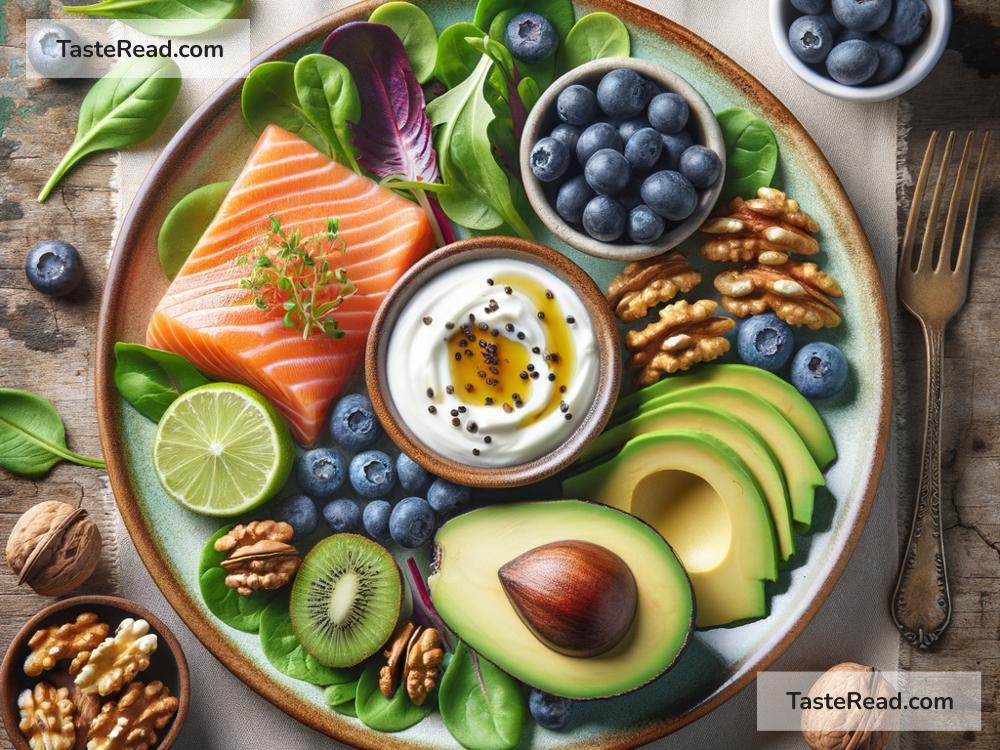Foods That Support a Healthy Skin Microbiome
Your skin does an amazing job of protecting you. It’s your first line of defense against harmful bacteria, pollution, and other things that don’t belong in your body. But did you know that your skin is home to trillions of tiny organisms, such as bacteria, fungi, and viruses? Don’t worry—they’re mostly good guys! Together, these microorganisms make up your skin microbiome, which plays a big role in keeping your skin healthy, strong, and glowing.
When your skin microbiome is balanced, it can fight off harmful bacteria and prevent common skin issues like dryness, acne, or irritation. But if your microbiome is out of balance, it can lead to skin problems like redness, sensitivity, or even chronic conditions such as eczema.
The great news is that your diet can directly impact your skin microbiome. By eating nutrient-rich foods, you can support the good bacteria on your skin while keeping the bad ones in check. In this article, we’ll cover some tasty, skin-loving foods that promote a thriving skin microbiome.
1. Fermented Foods
Fermented foods are packed with probiotics, which are live bacteria that support your gut and skin health. A healthy gut microbiome works hand-in-hand with your skin microbiome, so eating fermented foods benefits both.
- Examples: Yogurt, kefir, sauerkraut, kimchi, miso, and kombucha.
Probiotics from fermented foods help reduce inflammation in the skin and support its natural barrier function. They can also calm conditions like acne, rosacea, and eczema, making them a must-have in your diet.
2. Prebiotic Foods
Prebiotics are like food for the good bacteria in your microbiome. When you eat prebiotic-rich foods, you’re helping the good microbes thrive so they can keep your skin healthy.
- Examples: Bananas, onions, garlic, asparagus, leeks, and oats.
Prebiotics promote balance among the bacteria on your skin, which reduces irritation and improves overall skin health. A diet with enough prebiotic foods could lead to fewer breakouts and smoother skin over time.
3. Fatty Fish
Fatty fish like salmon, mackerel, and sardines are loaded with omega-3 fatty acids. These are fantastic for your skin because they help reduce inflammation, keep your skin hydrated, and support its natural barrier.
Omega-3s also contribute to a balanced microbiome by promoting a healthy inflammatory response. If dry or irritated skin is a concern, adding fatty fish to your meals a few times a week may make a big difference.
4. Colorful Fruits and Vegetables
Bright, colorful produce is full of antioxidants, which help protect your skin from damage caused by UV rays, pollution, and other stressors. They also support a strong microbiome by reducing inflammation and oxidative stress.
- Examples: Berries (blueberries, strawberries, raspberries), leafy greens like spinach and kale, sweet potatoes, carrots, and bell peppers.
The antioxidants in these foods help your skin repair itself, reducing redness and promoting a healthy glow. Plus, many fruits and veggies are high in vitamins, like Vitamin C and Vitamin A, which are essential for collagen production and skin elasticity.
5. Nuts and Seeds
Nuts and seeds are small but mighty when it comes to skin health. They contain healthy fats, vitamins, and minerals that nourish both your skin and its microbiome.
- Examples: Almonds, walnuts, sunflower seeds, chia seeds, and flaxseeds.
These foods provide zinc and Vitamin E, which help your skin heal and repair. Zinc is especially important for maintaining the skin barrier and fighting acne-causing bacteria.
6. Whole Grains
Whole grains like quinoa, brown rice, and oats are rich in fiber, which supports a healthy gut microbiome. Since the gut and skin microbiomes are closely connected, eating whole grains can indirectly improve your skin health.
Fiber also helps your body remove toxins, which may contribute to clearer skin. Swap refined carbs like white bread for whole-grain alternatives to give your microbiome a boost.
7. Green Tea
Green tea is a simple yet powerful addition to your diet for skin health. It’s rich in antioxidants called catechins, which help reduce inflammation and fight free radicals that damage your skin cells.
Drinking green tea regularly may help with acne, redness, and irritation. Plus, its anti-inflammatory properties support the balance of your skin microbiome.
8. Healthy Fats
Healthy fats, such as those found in avocados and olive oil, are great for keeping your skin moisturized and supple. These fats strengthen your skin’s natural barrier, preventing dryness and irritation.
- Examples: Avocados, olive oil, and coconut oil.
These fats also play a role in maintaining a healthy microbiome by supporting the protective layer of your skin.
What to Avoid
While eating microbiome-friendly foods, it’s also important to avoid foods that can throw your skin microbiome out of balance. Limit your intake of sugary snacks, processed foods, and alcohol, as they can contribute to inflammation and disrupt your skin’s natural bacteria.
Final Thoughts
The key to a healthy skin microbiome is balance. Eating a variety of nutrient-rich foods can help your good bacteria thrive, keeping your skin glowing and strong. Focus on adding probiotic and prebiotic foods, healthy fats, and antioxidant-rich produce to your diet, and make sure to drink plenty of water to keep your skin hydrated.
Your skin deserves love and care—not just on the outside with skincare products but also on the inside with nourishing foods. Remember, a little effort goes a long way in maintaining a thriving skin microbiome—not to mention clearer, healthier, and more radiant skin!


